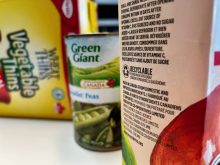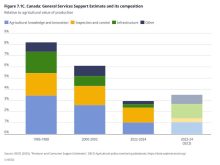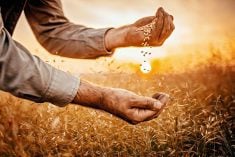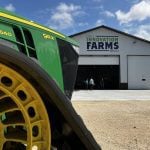Producers will have to take a close look at their farm’s finances before deciding if AgriStability is the right program for them in the coming years, say Prairie farm leaders.
Last fall, changes were made to how program payouts are triggered. For some producers these changes will come into effect in 2013.
“It’s all over the board… everybody really has to take a look at their own situation and analyze their own figures and make their own decision,” said Lynn Jacobson, president of the Wild Rose Agricultural Producers.
Read Also

Glufosinate-resistant waterhemp found in U.S. Midwest
Kochia may also be on the road to Group 10 herbicide resistance, which would be a serious blow to Prairie farmers and canola growers, warns weed scientist.
Jacobson discussed the issue with other producer group representatives during the Keystone Agricultural Producers (KAP) annual general meeting in Winnipeg.
Under the new AgriStability guidelines, payout requires a 30 per cent drop in program year margins instead of 15 per cent. Payouts will also be based on the lower of a producer’s reference margin or allowable expenses. In the past, it was based on the reference margin.
Jacobson said there are also outstanding questions about whether AgriStability will be used as a trigger for other assistance programs.
“The government hasn’t said if there’s any cross-compliance yet, but when you do ask the question, they kind of hesitate and kinda think about it for a while, so we don’t know the answer,” Jacobson said.
Todd Lewis, vice-president of the Agricultural Producers Association of Saskatchewan, isn’t happy with the changes to the program. But he wasn’t happy with AgriStability in the first place.
“Our position at APAS was that the program should be wound up,” he said. “It was a program that had a lot of flaws in the design and could be easily manipulated.”
That said, Lewis would like to know where the money the federal and provincial governments are saving on AgriStability is going. Although he’d like to see it go to new programs for farmers, or towards reinforcing crop insurance, Lewis said the government hasn’t supplied that information.
“I think that farmers need something that is bankable, AgriStability never was bankable — nobody was sure what cheques were coming, or if you got a cheque if you’d be able to keep it all,” he said. “I think we need something much more predictable.”
KAP president Doug Chorney said he was disappointed by the “pseudo-consultation” the federal government did with producers before making the changes.
The new system doesn’t recognize good management skills on the part of the producer, he said. It also banks on unrealistic stability.
“I expect governments are hoping grain prices are going to stay high, and that livestock prices will recover and times will be good,” Chorney said. “But when you look back at history there has always been this cyclical nature of weather and market conditions that don’t favour consistent profitability.”
Providing some extra stability to the farm sector through programs like AgriStability is beneficial to the agricultural industry and urban populations via the economic spinoff it creates, said the KAP representative.
“Canada is driven by agriculture, we don’t need to make any apologies for getting government backstop during these downturns,” he said. “General Motors got help from the government, why can’t farmers know the government will be there for them in a year when they need it?”














